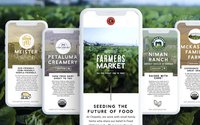Commentary
Fast-Food Cravings: Health, Comfort, Hospitality
- by Sarah Mahoney , Staff Writer @mahoney_sarah, July 7, 2020

Healthy innovations from Chipotle
Restaurants around the country are opening up -- and then closing, and then opening again. As Americans get used to the idea that in this pandemic, “back to normal” isn’t happening any time soon, their mood and tastes are shifting. Maeve Webster, president of Menu Matters and consultant to the food-service business, tells QSR Land what to expect from this “We’re reopening -- oops, maybe not” period of the COVID-19 crisis.
QSR Land: The industry has been so focused on when and how to reopen, and that’s important. But longer-term, what trends do you see developing?
Maeve Webster: There’s a real sense of nostalgia, not for what you had as a kid but for what you had before the pandemic. Everyone wants to remember when they felt safer. So I expect a big rise in comfort food, as well as a greater emphasis on health and functional foods.
QSR Land:So meatloaf and mac and cheese on the one hand, and mushrooms and miso on the other?
Webster: Not exactly. People will find comfort in foods that were on their radar just before the pandemic -- so it could be pho or bao buns. So beyond the essential comfort foods, like casseroles and lasagna, I expect a resurgence in international meals, especially Middle Eastern and North Africa. And health will look different too.
QSR Land: How so?
Webster: Even before the virus, there had a big surge in plant-based innovations. Yes, they’ve got a health halo. But they are also part of a comfort food trend -- burgers are comforting! And they aren’t designed to appeal just to people who are vegan, vegetarian or super-health-focused. It’s that anybody can have this burger and not feel quite as guilty.
QSR Land: How fast do you think people will start heading back to restaurants, looking for those new flavors?
Webster: Very slowly. These last three months, it was like stretching-a-rubber-band fast -- it all happened very, very quickly. We all went into lockdown. Then we started opening up, and it was like the rubber band snapped back.
But as restaurants slowly ease back into closures, I expect them to reopen again just as slowly. It’s hard to tell by how much, but I think bouncing back from a second surge will take much longer.
QSR Land: How is that going to impact restaurants?
Webster: I’m telling my clients to assume any changes they make are for the long term. So instead of cobbling things together with shower curtains and taping off tables, it's important to make them look built-in and permanent.
Consumers want a sense of normalcy, and looking like you’re still working under an ever-changing temporary crisis doesn’t help.
It’s not an emergency anymore. This is here to stay. When they ask me, “When will we get back to normal?” I say, “Who cares? This is where we are now.” This is the reality for the next few years, not the next few months.
QSR Land: But aren’t consumers also comforted by these very visible safety measures? How can restaurants convey careful adherence to rules and hygiene, without making people feel like the restaurant just squirted bleach on the lettuce?
Webster: Sanitation can become so aggressive that it overshadows hospitality, and restaurants can’t let that happen. And precautions need to be done in a way that fits in with the brand.
I just visited the Vermont Country Store, and the communication was very clear, very friendly -- downright welcoming. People shouldn’t feel like they are being yelled at via signs.
QSR Land: Are restaurants doing a good job with that so far?
Webster: Yes. Research shows that consumers feel good about restaurants, which generate a high level of trust. It’s the general public [consumers are] worried about. So businesses need to do a better job of managing customers, and doing it consistently.
QSR Land: Restaurants have been so innovative: takeout, meal bundles, subscriptions. Will that burn out?
Webster: Not any time soon, and it’s great. I just saw that Chipotle is launching a virtual farmers’ market.
Offsite dining will grow in importance, especially among younger consumers. To me, that’s the most significant change. Restaurants have always seen themselves as coming up with innovative food ideas, then pushing them out to consumers. Now, they realize that they need to be driven by consumer solutions.
QSR Land: Are they up to that change?
Webster: It’s a little more boring for them, I think. These are people who have been driven by flavors and food trends and new menus. But consumers need other innovations more right now. Restaurants need to ask what consumers enjoyed in the onsite experience and reinvent it for people’s homes.



